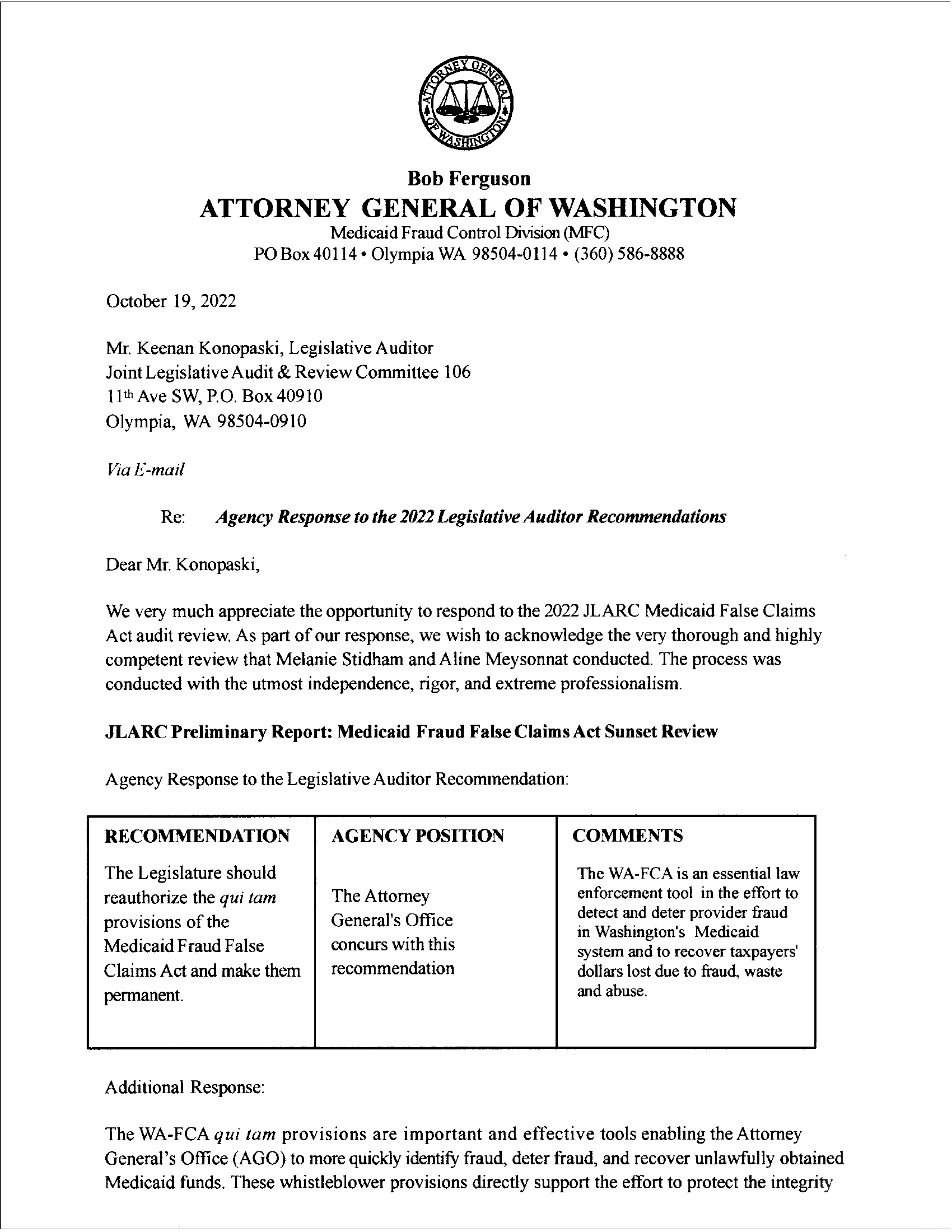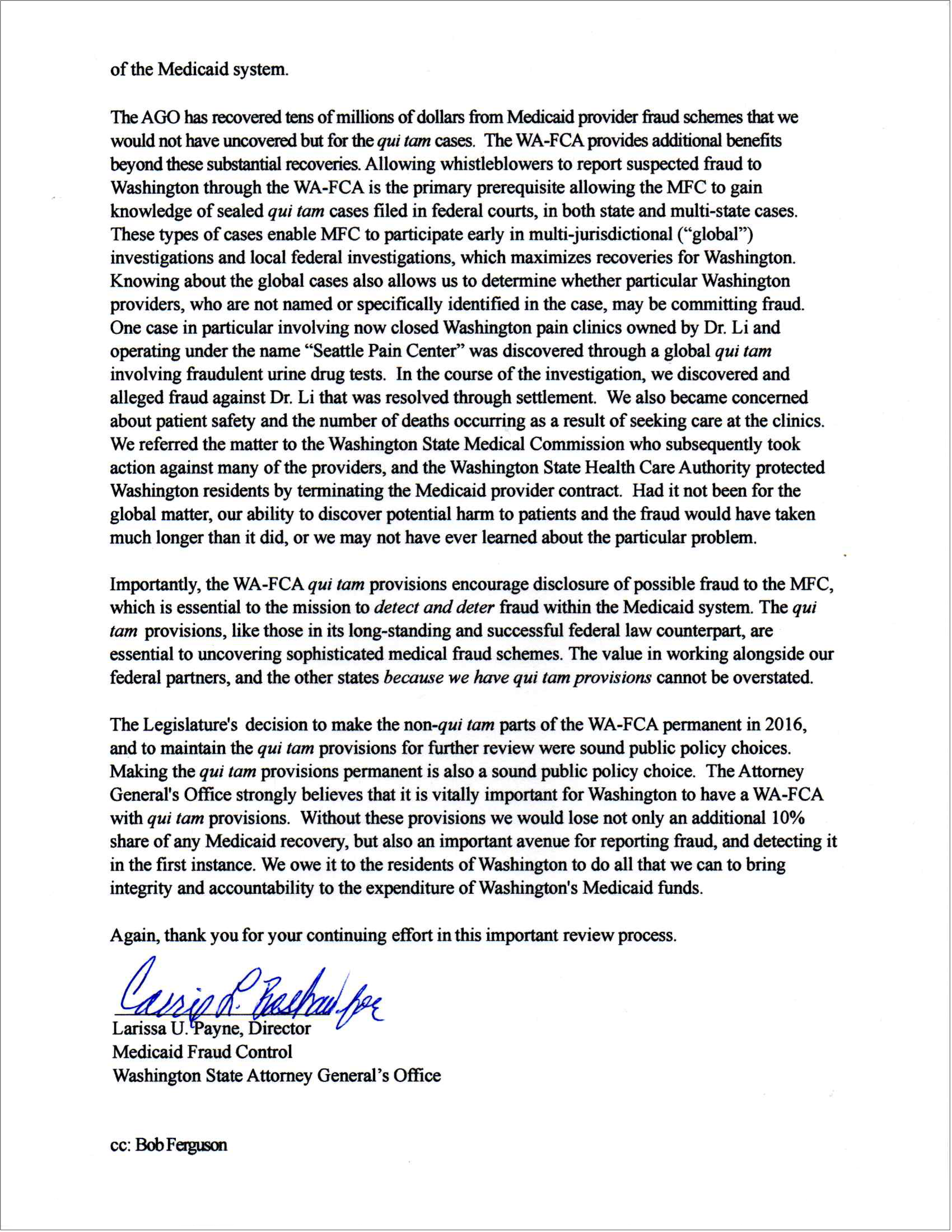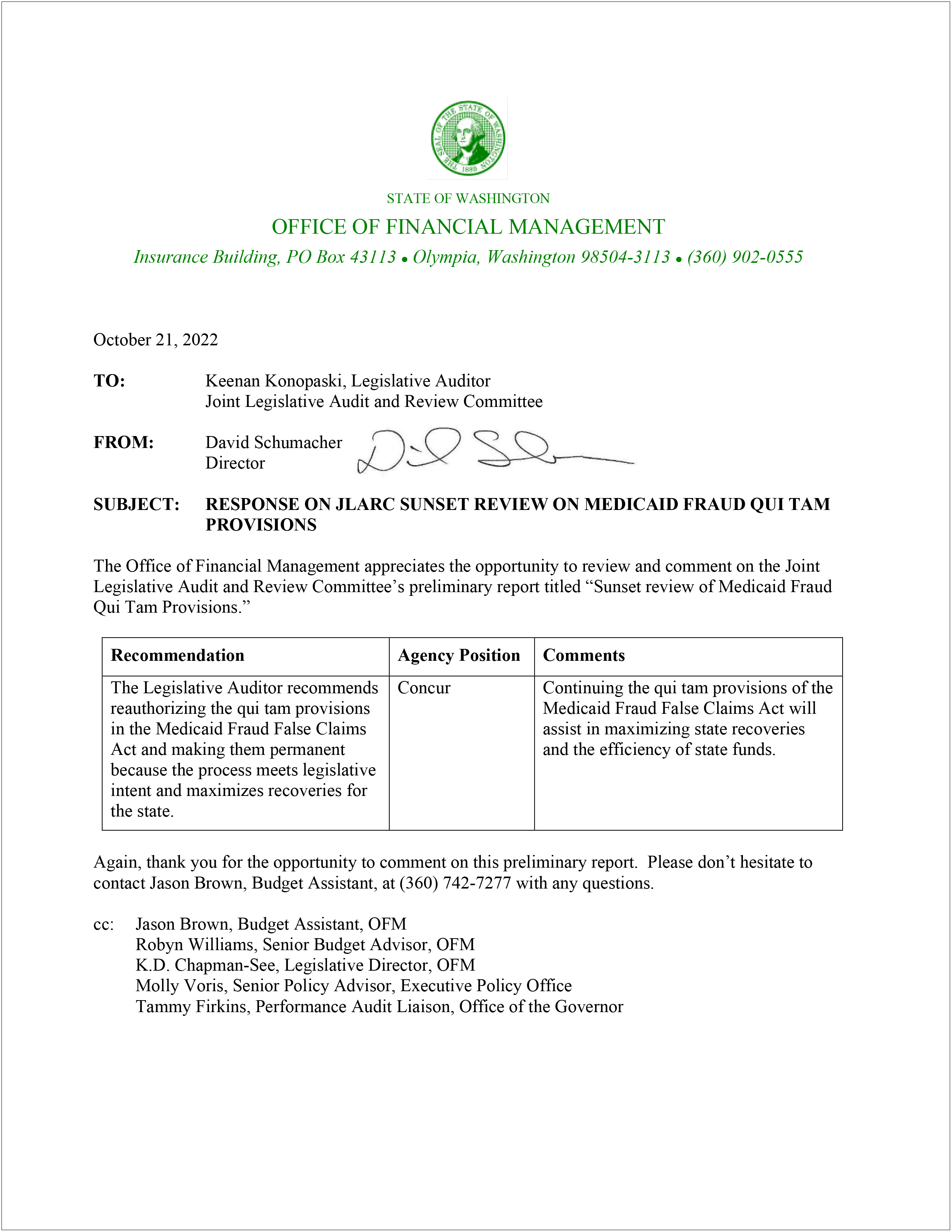Executive Summary
Medicaid is a joint federal-state program that pays providers who deliver health care to eligible populations. Medicaid fraud is a type of fraud in which health care providers knowingly submit false claims for payment. Medicaid fraud increases costs for the state and federal government and may result in patient harm.
This report focuses on one specific method for reporting civil fraud called "qui tam,"Qui tam originates from a Latin phrase meaning "he who prosecutes for himself as well as the King." as authorized by the 2012 Medicaid Fraud False Claims Act (the Act, Chapter 74.66 RCW).
Qui tam provisions in the Medicaid Fraud False Claims Act allow private parties to file complaints in civil court on the state's behalf
The Act authorizes Washington’s Office of the Attorney General (AGO) to pursue civil cases against Medicaid providers that are suspected of committing fraud. It includes qui tam provisions that allow private third parties (called relators) to file a complaint alleging Medicaid fraud in state or federal civil court on the state's behalf.
If the AGO finds sufficient evidence that fraud occurred, it seeks a financial recoveryThe recovery amount is the financial compensation that the state receives through settlement or court judgment. It may include the amount of fraudulent reimbursement, damages, penalties, and interest. for the state through settlement with the provider or a court judgment. The relator receives a portion of the recovery.
After an initial JLARC review of the entire Act in 2015, the 2016 Legislature extended the sunset date for the qui tam provisions to allow more time for oversight and review. The rest of the Act's provisions were extended without a sunset. The qui tam provisions will sunset on June 30, 2023, unless the Legislature reauthorizes them (RCW 43.131.419).
The AGO fulfills its statutory responsibilities
The AGO investigates all state qui tam casesCases that only involve Washington. Some cases may also name the federal government. and decides whether to pursue legal action. The AGO also investigates multistate qui tam casesCases that involve two or more states and the federal government. and non-qui tam cases.
The AGO considers several factors during its investigation, including the nature of allegations, strength of evidence, potential recovery amount, and patient harm.
Once the AGO completes an investigation, it can take one of three actions:
- Decline to take legal action. The relator can pursue the case on their own or request dismissal.
- Settle with the provider.
- Proceed with litigation against the provider (also called "intervention").
During the study period, the AGO complied with all of the statutory requirements in Chapter 74.66 RCW.
Relators filed 19 state qui tam cases during the study period. One case was ruled "clearly frivolous."
During the study period, federal fiscal years 2016 through 2022Federal fiscal year 2022 includes eleven months of data, from October 1, 2021 through August 31, 2022., relators filed 19 state qui tam cases. Twelve of these have been resolved. The AGO declined to take legal action in eight, settled three, and litigated one. As of August 2022, the remaining seven cases were still under sealThe case is under seal during the AGO's investigation. Only the court, the relator, the AGO, and the federal government (if named) are aware of the case. The provider does not have access to court documents while it is under seal..
Opponents of the qui tam provisions passed in 2012 expressed concerns about the potential for numerous frivolous lawsuits. Per statute, a provider can request a court to make a frivolous determination after three conditions are met: the AGO declines to pursue legal action, the relator continues the case on their own, and the court rules in favor of the provider. Even if these conditions are met, courts have indicated that they reserve such rulings for "rare and special circumstances." Of the 12 resolved state cases in Washington, one was found by the court to be clearly frivolous.
The AGO recovered eighteen times more than it spent
During the study period, the AGO opened 499 civil Medicaid fraud cases. This includes state and multistate cases that are both qui tam and non-qui tam. The AGO spent $4.0 million in state funds investigating these cases and recovered $71.8 million for the state’s Medicaid program, including $62.6 million from qui tam recoveries. The state's return on investment (ROI) was $17.76 for every dollar spent.
The state’s qui tam process works as intended to combat Medicaid fraud and maximize recoveries for the state
JLARC staff found that the AGO implements the qui tam provisions consistent with legislative intent. The provisions provide a method for reporting fraud, allow the AGO to participate in multistate cases, and maximize Washington’s financial recoveries. If the provisions were to sunset, Washington would lose a method for identifying Medicaid fraud, access to multistate investigations, and the potential for financial compensation through recoveries.
Legislative Auditor Recommendation
The Legislative Auditor recommends reauthorizing the qui tam provisions in the Medicaid Fraud False Claims Act and making them permanent because the process meets legislative intent and maximizes recoveries for the state.
The AGO and OFM concur with this recommendation. You can find additional information in Recommendations.
Committee Action to Distribute Report
On November 30, 2022 this report was approved for distribution by the Joint Legislative Audit and Review Committee. Action to distribute this report does not imply the Committee agrees or disagrees with Legislative Auditor recommendations.















